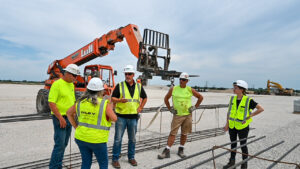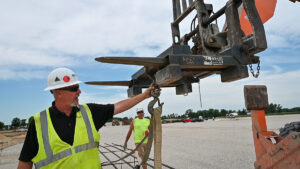3 Ways to Reduce Construction Risk through Culture Change
By Jim Janquart, Contributor
It’s no surprise that safety continues to be a top priority in the construction industry, with over 200,000 injuries occurring annually. As companies evaluate their safety protocols and training processes, it is equally important they work closely with each stakeholder to build a culture of openness and clear communication that encourages honest evaluation and accountability regarding the company’s safety policies.
Safety protocols can provide team members with a sense of duty. When accidents are reported to the appropriate parties in a forthright and timely manner, there is a greater chance for future incidents to be mitigated or prevented.
A commitment to safety in construction is crucial. Here are a few ways to revamp your construction company’s culture to ensure teamwide engagement when it comes to safety.
1. Predict Safety Issues Before They Arise
According to the U.S. Bureau of Labor Statistics, the construction industry accounted for 46% (over 1,000 workers) of fatal falls, slips, and trips in 2020 — the third highest fatality rate of any industry. This high rate is often attributed to unsafe conditions on the jobsite such as unprotected edges, uneven surfaces, loose materials, or holes in the ground. A productive way to address and lower this incident rate is to build a stronger culture of workplace safety.
A safety-focused culture should include a system of reporting not only accidents and injuries, but also any near misses that occur. Research shows that for every 300 near misses — incidents that do not result in injury or property damage — there is one severe injury. To effectively reduce these numbers, teams must pay closer attention to near miss data that can be used to identify potential hazards. The data can also be used to determine corrective actions such as types of equipment, PPE, and any other specific training needed.
When a dependable reporting strategy — one that is grounded in trust and transparency — is developed, construction workers will feel more secure in sharing close calls or mishaps that occur rather than feeling vulnerable or delinquent. And when accidents are brought to light and evaluated, there are more opportunities to curb them in the future.
2. Emphasize Everyone’s Role in a Culture of Safety
Former astronaut and retired U.S. Navy Captain Scott Kelly once said, “Safety has to be everyone’s responsibility. Everyone needs to know that they are empowered to speak up if there’s an issue.” All construction team members play a significant role in maintaining a safe environment. One way to ensure this happens and keep everyone on the same page is to regularly conduct safety talks. These are informal discussions set up to educate workers and promote awareness of the many risks they face on the job.
Safety talks — commonly known as toolbox talks — are not limited to field crews. Office staff, including the estimating department and project managers, should also be involved in weekly talks to learn of any potential safety concerns on the jobsites. These hazards include the OSHA “Focus Four” — fall protection, electrical, struck-by, or caught-in/between — and other potential issues.
Here are a few of the many benefits that result from regular safety talks:
- Estimators can add time or equipment into the bid to promote safety in the construction stage.
- Project managers can partner with field leaders to ensure safety is planned into each activity.
- Field leaders can meet with on-site construction crews weekly to review the safety trends and topics, help identify possible jobsite hazards, and plan upcoming construction activities so they are completed safely, on time, and within budget.
A well-rounded safety culture not only improves internal morale, but also helps boost a construction company’s overall reputation and lower insurance rates. One key metric in this area is a construction company’s experience modification rating (EMR), a number that determines the likelihood of workers’ compensation claims based on its safety records. The lower the EMR, the lower the company’s insurance premiums. The national average EMR is 1.0; anything less is an indication that the company poses a lower safety risk.
3. Encourage Open Communication Across Construction Teams
In every industry, communication is key. In construction, proper communication can literally mean life or death. Meetings — whether virtual or in-person — should be held on a monthly basis with project managers and field leaders to review any previous safety incidents to help identify hazards and plan for safety and quality concerns.
Encouraged employees offer feedback openly. This feedback truly makes safety an integral part of the company culture, especially when employees see it resulting in changes, both small- and large-scale. Quarterly bulletins and safety alerts should also be created to share information with the greater team to help reduce the risk of hazards on the jobsites. When open communication becomes an accepted norm, safety risks are likely to decline.
A culture embedded in safety is key to reducing risks in the construction industry. Organizations can develop their safety culture through comprehensive safety education and trend analysis, a company-wide sense of empowerment to make changes, as well as advocacy of open communication. When every construction worker makes it home safely each night, the mission has been accomplished.
Jim Janquart is a Senior Field Safety Specialist, Riley Construction (rileycon.com).





